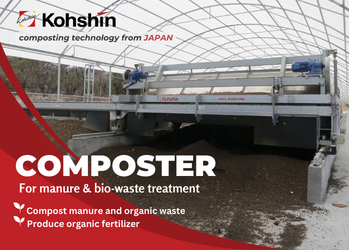Worldwide revenue generated from biofuels sales amounted to US$ 140.43 Billion. Projections indicate that the industry is poised for growth at a Compound Annual Growth Rate (CAGR) of 4.8% from 2022 to 2032.The bioethanol segment is anticipated to emerge as the leading revenue generator, contributing significantly to the market. Over the next decade, it is expected to present an absolute dollar opportunity of approximately US$ 53.6 Billion
The global biofuels market has emerged as a promising and sustainable solution to the ever-increasing challenges posed by climate change, depleting fossil fuel reserves, and the need for energy independence. Biofuels, derived from organic materials such as plants and waste, are gaining traction as a cleaner alternative to traditional fossil fuels. This article explores the dynamics, trends, and challenges shaping the biofuels market, highlighting its potential to revolutionize the energy landscape.
Market Dynamics:
The biofuels market has witnessed significant growth in recent years, driven by environmental concerns, government initiatives, and advancements in biofuel technology. The market encompasses various types of biofuels, including biodiesel, bioethanol, biogas, and advanced biofuels. Biodiesel and bioethanol, produced from crops like soybeans, corn, and sugarcane, dominate the market. However, advanced biofuels, derived from non-food feedstocks such as algae, waste, and cellulosic materials, are gaining prominence due to their lower environmental impact.
Government Policies and Incentives:
Government support and policies play a crucial role in shaping the biofuels market. Many countries are implementing mandates and incentives to promote the use of biofuels, reduce greenhouse gas emissions, and enhance energy security. In the United States, the Renewable Fuel Standard (RFS) mandates the blending of biofuels with traditional fossil fuels. Similarly, the European Union’s Renewable Energy Directive (RED) sets targets for the use of renewable energy in the transportation sector. These policies stimulate investment in biofuel production and create a favorable environment for market growth.
Environmental Benefits:
One of the key drivers behind the increasing demand for biofuels is their positive environmental impact. Biofuels, when compared to conventional fossil fuels, generally produce lower levels of greenhouse gas emissions. The carbon dioxide released during combustion is offset by the carbon dioxide absorbed during the growth of the feedstock, creating a more sustainable and carbon-neutral energy source. As concerns about climate change intensify, biofuels offer a viable solution to reduce the carbon footprint of the transportation sector.
Technological Advancements:
Advancements in biofuel technology have significantly improved the efficiency and cost-effectiveness of biofuel production. Researchers are exploring innovative methods to enhance the conversion of biomass into biofuels, such as the use of genetically modified organisms, synthetic biology, and improved fermentation processes. Additionally, the development of advanced biofuels, which can be produced from a wider range of feedstocks, holds great promise for diversifying the biofuels market and overcoming limitations associated with traditional biofuel production.
Challenges and Barriers:
Despite the positive momentum, the biofuels market faces several challenges. Competition for land and water resources between biofuel crops and food crops raises concerns about food security. Additionally, the high upfront costs of biofuel production facilities and the volatility of feedstock prices can hinder market growth. The debate over the impact of biofuel production on land-use change and biodiversity remains a topic of contention, requiring careful consideration and sustainable practices to address these concerns.
Read Related Report–
Aircraft Fuel Cells Market- According to Fact.MR, the global aircraft fuel cells market stands at US$ 460.66 million in 2023 and is projected to jump to US$ 5.88 billion by 2033. Worldwide demand for aircraft fuel cells is forecasted to skyrocket at a CAGR of 29% over the next 10 years.
Bioprocess Bags Market – Bioprocess Bags Market By Type(2D, 3D), By Capacity (Small, Medium, Large, Extra Large), By End-use Industry (Biotechnology, Pharmaceuticals), By Application, By Region – Global Market Forecast 2020-2030
Fracking Fluids and Chemicals Market- Fracking Fluids and Chemicals Market By Function Type (Biocides, Corrosion Inhibitors, Friction Reducers, Gelling Agents, Scale Dissolvers, Cross-Linkers), By Type (Water-based, Oil-based, Foam-based), By Region – Forecast to 2020-2030
Coenzyme Q10 Market- The global coenzyme market is estimated to be valued at US$ 689.5 million in 2023 and it is expected to grow at a CAGR of 7.2% to reach US$ 1,381.9 million by the end of 2033
These insights are based on a report on Biofuels Market by Fact.MR.






















